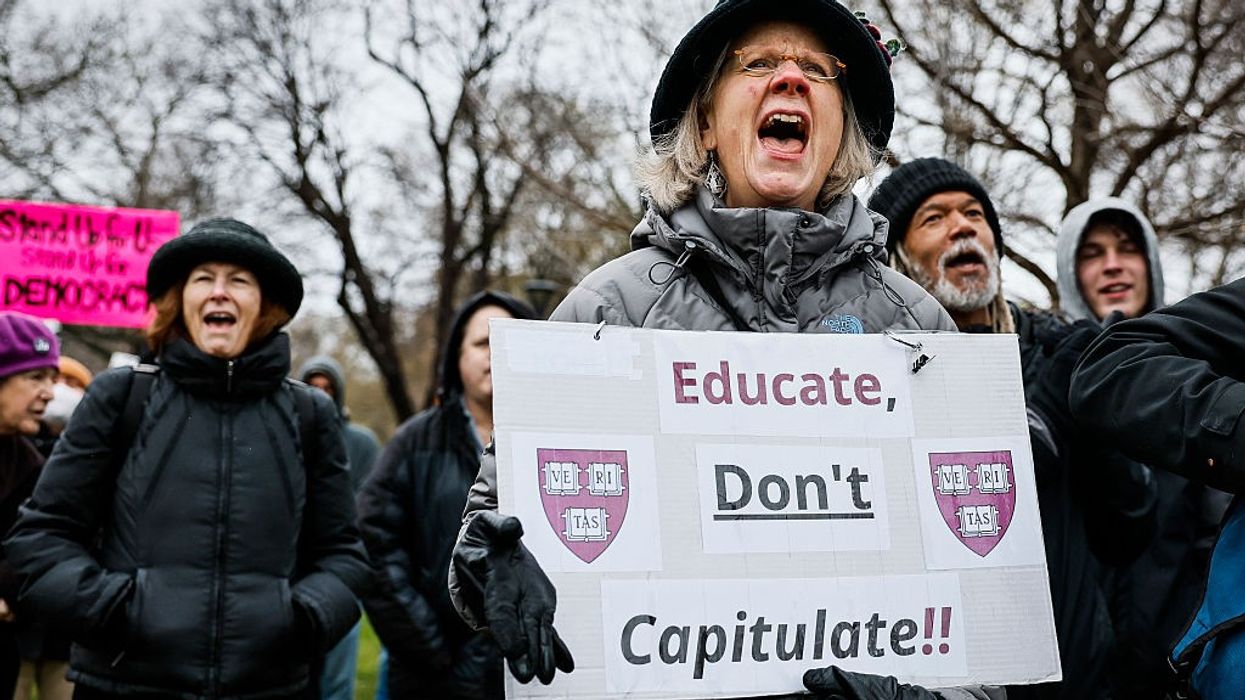The Fight for Academic Freedom Is a Fight for Justice
The right-wing effort to infringe on students' right to learn is an effort to hobble higher education as a force for creating a more just society.
We who believe in the value of academic freedom have been disheartened these past two years as quisling administrators at some of America’s once-great universities have caved to political pressure to quash protests, cancel courses, and limit professorial speech that is critical of inequalities in US society and US foreign policy.
These attacks on academic freedom are usually framed as threats to the freedom of faculty to conduct research, publish, speak, and teach, based on disciplinary expertise, without outside political interference. This portrayal of the threat, as true as it is, misses a key point: Also under attack are students’ rights to learn. The right-wing effort to infringe these rights is an effort to hobble higher education as a force for creating a more just society.
Long ago, as an undergrad in an introduction to physical anthropology course, I played a game we called stump the prof. It wasn’t a real game; it was just a few of us trying to liven things up by asking questions we thought would be hard or impossible to answer. The prof was young and upbeat, as I recall, and never seemed put out by our antics, though he no doubt saw what we were doing. I think he liked the energy. One time I asked if apes had orgasms. That got people’s attention.
In that class, taught 50 years ago at a public university, we as students felt free to ask whatever occurred to us (within the bounds of physical anthropology, of course). Our exercise of that freedom is part of what made the class memorable. We weren’t just amusing ourselves or bugging the prof. It might sound self-congratulatory, given that our motives weren’t entirely noble, but we were wringing a lot more knowledge out of the course than we might otherwise have gotten.
The worry is that students will develop the ability to question received truths, see through the ideologies that justify social and economic inequalities, and resist manipulative political rhetoric that bypasses rationality.
What was true back then is true today: How much students learn in college depends on the opportunities they’re given. When a course is scratched from the catalog, students miss out on the knowledge that would have been available to them in that course. Students lose out, too, when certain concepts are proscribed, or when faculty self-censor for fear that discussing those concepts and related topics might get them in trouble. That’s why interference with the ability of faculty to teach what they deem important infringes on the right to learn.
Suppose, for example, that students wanted to ask how conventional gender expectations constrain our humanity. That’s a serious question deserving a serious answer. It’s a question that might be asked in a sociology or gender studies course. But if no such course exists, or if an instructor feels compelled to say, “Sorry, a group of politicians has made it too risky to talk about such stuff,” students are kept from learning. That’s a betrayal of what higher education has promised them: freedom to ask questions, freedom to pursue their curiosity, freedom to grow through the acquisition of vetted knowledge.
Right-wing ideological warriors and politicians would like to leave students in the dark about many other troublesome things: institutional racism, white supremacy, the exploitation of labor, the global havoc wreaked by US imperialism, the domination of government by corporate capitalists and the very wealthy. In relation to these matters, there is much that needs to be faced up to and talked about if we hope to understand how our society works and how to make it work better. And, yes, some courage is required.
Suppose students asked how it is possible for racial disparities—in income, wealth, education, health status—to persist even when most people overtly disavow racism. That’s another question that deserves an answer. It’s also a question that can be answered based on decades of social science research. Students shouldn’t be denied the opportunity to ask these questions and get answers because the topic makes some people uncomfortable. We should not let discomfort be weaponized to protect ignorance.
Students might also want to know how it’s possible for some people to enjoy privilege and not know it. Or how racism has historically supercharged capitalism. Again, these are all legitimate matters for university-level inquiry. But they’re also threatening to politicians who, on the one hand, serve economic elites and, on the other hand, exploit popular prejudices to mobilize voters. That’s the real reason for right-wing attacks on the disciplines and courses where students can learn about our society’s inequalities, past and present.
Critics of intellectual spaces in which students can learn to think critically about US society often claim they want to protect students from liberal indoctrination. But it’s not really indoctrination they worry about. The worry is that students will develop the ability to question received truths, see through the ideologies that justify social and economic inequalities, and resist manipulative political rhetoric that bypasses rationality. Education that imparts these abilities is indeed “liberal,” in the classical sense of being liberating. Which is the opposite of indoctrination.
Universities are dangerous places—or they can be, when faculty are free to pursue the truth even if the results disturb political and economic elites; when faculty are free to teach what they have found through their research and scholarship; and when students are free to ask tough, even off-the-wall, questions. But of course the danger is not to those who want to inquire critically about social inequalities, or employ concepts that might upend common sense, or to teach and learn about these matters. The danger is not to those who seek in good faith to fulfill the promises of higher education. It is to those whose power and privilege depend on keeping these promises from being met.


